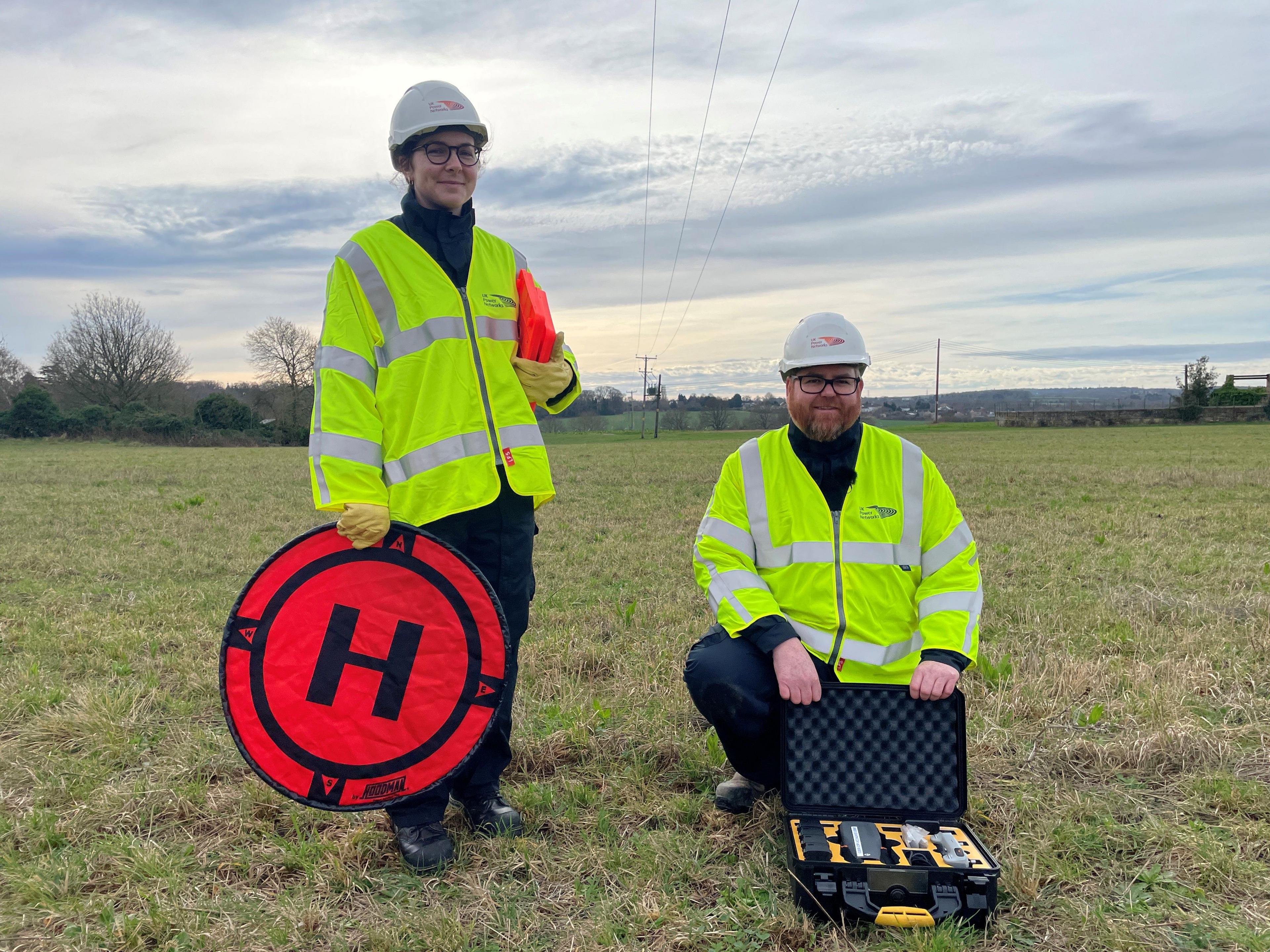Drone technology helps fix power cuts

Phil Burke (right) says the drones cut the duration of power cuts by an average of 30 minutes
- Published
Drone technology is being trialled to help speed up the time it takes to fix power cuts in rural areas across the South East.
UK Power Networks engineers are testing whether high quality video images from drones can pinpoint damage.
The operator said the technology was a "powerful tool" to help find the cause of power cuts more quickly, making blackouts shorter and the work to repair them safer.
The technology is being tested in parts of Kent, Sussex and Essex.
A typical high voltage fault impacts 100 properties, after an initial process to restore power to as many as possible.
Traditionally, engineers would walk underneath the whole length of the overhead electricity cables to try to find the fault.
However, drones can be flown above and images viewed on a laptop on site.
Phil Burke, an electrical engineer leading the trial at UK Power Networks, said: “Our teams face hedgerows, wire fences, ditches, woodland, fallen branches and uneven ground.
"Sometimes we’ll reach an obstacle like a fence and need to walk further away from the line to return to the same spot and continue the line patrol. "
He said walking one kilometre of line could take anything from 10 minutes to an hour, while drones could fly overhead far more quickly than workers who would need to climb a wooden pole to inspect equipment.
This reduces the risk of slips, trips and falls in rural areas, Mr Burke explained.
UK Power Networks estimate that flying drones will cut restoration times by an average of 30 minutes.
The operator runs the cables and substations that deliver electricity from the national grid to 8.5 million homes and businesses across London, the south east and east of England, serving approximately 20 million people.
It says foot patrols would still be required in situations such as windy weather and in the dark, and helicopters would continue to cover longer distances more quickly.
Follow BBC South East on Facebook, external, on X, external, and on Instagram, external. Send your story ideas to southeasttoday@bbc.co.uk.